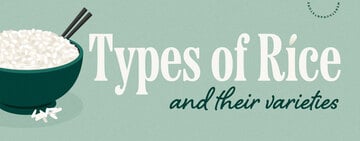Oats are a powerhouse ingredient. Not only can they be used by themselves to make an entire meal, but oats can also lend themselves to thickening up recipes both sweet and savory. The only problem? There are a ton of different types of oats available, and it’s not completely obvious how they differ.
We dive into the different types of oats you can come across, how they are made, what they look and taste like, the best way to use oats, and how to cook them on the stovetop for a warm bowl of cozy oatmeal.
Shop All OatsTypes of Oats
Below is a list of the different types of oats that are available to use:
1. Rolled Oats / Old Fashioned Oats
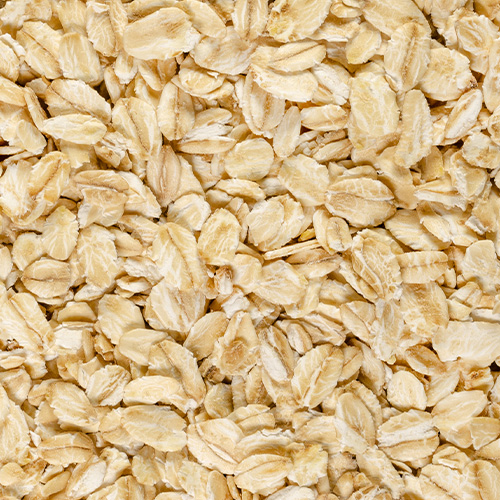
Also known as old-fashioned oats, rolled oats are made by taking whole oat groats, steaming them, and rolling them into flakes. This flattening process creates a greater surface area that makes them quicker to cook, as well as stabilizes the natural oils in the oats, helping them stay fresher longer for shelf-stable storage.
- Rolled Oats Shape - Irregularly rounded, flat, textured, and with an indented line down the center
- Rolled Oats Taste - Mild, creamy, and a perfect mix of creamy and uneven lumps
- Best Uses for Rolled Oats - Other than oatmeal and overnight oats, rolled oats can be used in baking cookies and quick breads, making granola, or adding to smoothies to thicken them and add fiber.
How to Cook Rolled Oats
Before cooking oats, make sure you have a 1:2 ratio of oats to liquid. Place water, milk, or milk alternative of choice in a pot and bring to a boil. Reduce heat to low and add oats. Keep uncovered and cook for 20-30 minutes or until desired doneness is reached, stirring occasionally.
Rolled Oats vs Old Fashioned Oats
There is no difference between rolled oats and old-fashioned oats. Their names are used interchangeably to indicate the same type of oat. Sometimes even “regular oats” is used!
2. Steel Cut Oats
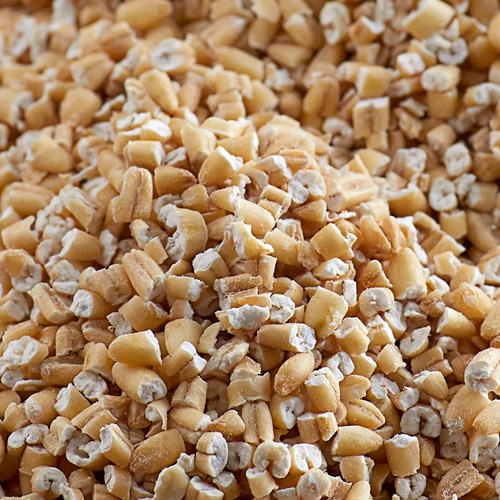
Also known as Irish oatmeal, steel-cut oats are the result of taking whole oat groats and cutting them into two or three smaller pieces on a steel burr mill. Doing this allows water to penetrate the oat more easily so it can cook more quickly, while still keeping a hearty texture to the oat.
- Steel-Cut Oats Shape - Round, thick grains the size of buckwheat kernels
- Steel-Cut Oats Taste - Toasty, chewy, and with a distinctive bite
- Best Uses for Steel-Cut Oats - Steel-cut oats make an excellent bowl of Irish oatmeal for your restaurant's breakfast service. Besides that, steel-cut oats are great in baked oatmeal, granola, stuffings, meatloaf, and black pudding.
How to Cook Steel-Cut Oats
Steel-cut oats should use a 3:1 ratio of liquid to oats. On the stovetop, bring the water to a boil, then add the oats and reduce the heat to medium-low. Cook, stirring occasionally, for 15-20 minutes, or longer depending on how creamy you like your oatmeal.
Steel-Cut Oats vs Rolled Oats
Steel-cut oats and rolled oats both start out as whole oat groats. To produce steel-cut oats, whole oat groats are chopped into two or three pieces, making them the least processed oat and the longest to cook, about 15-20 minutes.
To produce rolled oats, whole oats groats are steamed and flattened, partially cooking them and increasing their surface area, making them very quick to cook, about 2-5 minutes.
3. Instant Oats
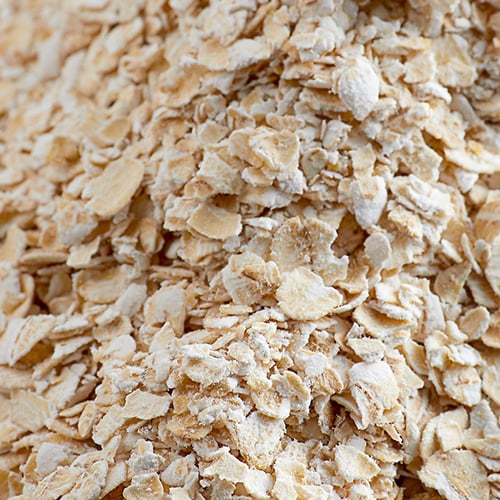
Instant oats are rolled oats that are flattened and/or steamed even further. This process increases the surface area even more to make the cooking process even quicker, hence their other name, quick oats!
- Instant Oats Shape - Paper-thin, tapered edges, and irregularly shaped
- Instant Oats Taste - Mild, slightly toasty, and creamy
- Best Uses for Instant Oats - Can be used for oatmeal, as a substitute for rolled oats in a baking recipe, or pulsed into oat flour
How to Cook Instant Oats
When cooking instant oats in the microwave, start with a 1:2 ratio of oats to liquid. Combine oats and liquid (water or milk of choice) in a microwave-safe bowl and stir. Microwave on high for 1-2 1/2 minutes. Let stand for 2-3 minutes.
When cooking instant oats on the stovetop, start with a 1:2 ratio of oats to liquid. Bring the liquid to a boil, stir in instant oats, and cook until it reaches desired consistency, about 1-2 minutes. Let stand for 2-3 minutes before eating.
Rolled Oats vs Quick Oats
The only difference between quick oats and rolled oats is the processing. Quick oats are rolled oats that have just been steamed and/or flattened even further than rolled oats.
4. Scottish Oats

Scottish oats are a type of oat that is used to make traditional porridge. Scottish oats are made by slowly grinding the oats between two millstones, producing paper-thin oats. To make the porridge traditionally as the Scots do, use a wooden spurtle as the stirring utensil to prevent lumping!
- Scottish Oats Shape - Paper thin with tapered edges
- Scottish Oats Taste - Mild, ultra creamy, and rich
- Best Uses for Scottish Oats - Traditional porridge, pancakes, scones, cereal bars, and Scottish oatcakes
How to Cook Scottish Oats
Scottish oats should use a 3:1 ratio of liquid to oats. On the stovetop, bring the water to a boil, then add the oats and reduce the heat to medium-low. Cook, stirring occasionally, for about 10 minutes.
5. Whole Oat Groats
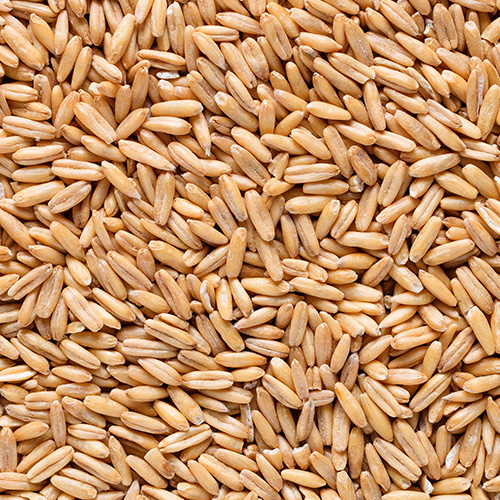
Whole oat groats are raw oats that have been cleaned and removed from their inedible hull. Raw oats are harvested and then undergo this processing to create whole oat groats. From there, you can process further to make the above types of oats.
- Whole Oat Groats Shape - Long, beige, rice-looking grain
- Whole Oat Groats Taste - Nutty and toasty
- Best Uses for Whole Oat Groats - Slow-cooked oatmeal, stews, salads, grain bowls, and cereal
How to Cook Whole Oat Groats
Whole oat groats should use a 3:1 ratio of liquid to oats. On the stovetop, bring the water to a boil, then add the oats and reduce the heat to medium-low. Cook, stirring occasionally, for about 60 minutes.
6. Oat Flour
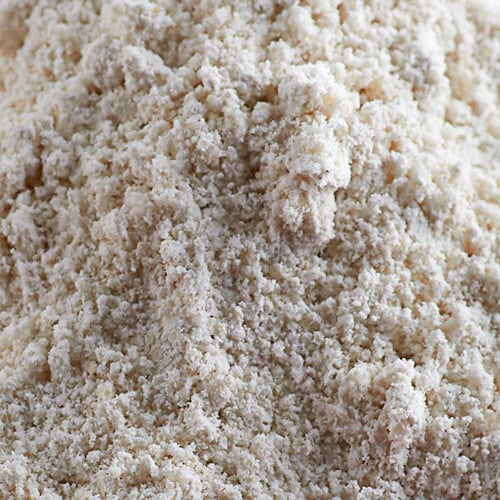
Oat flour is made from very finely ground oats, resembling the texture of regular flour. While it is not a direct replacement for regular flour, oat flour can be used in similar applications as flour, while providing all of the same great nutrients that oats provide.
- Oat Flour Appearance - Light, fluffy, and flour-like
- Oat Flour Taste - Mild, toasty, and nutty
- Best Uses for Oat Flour - Pancakes, cookies, cake, quickbreads, and thickening soups
How to Make Oat Flour
Place the desired amount of oats in a high-speed blender. Blend for about 15-20 seconds until all oats are broken up and the texture resembles regular flour. Store in an air-tight container. Oat flour can be used as gluten-free flour, as long as the package says it's certified gluten-free!
Is Oatmeal a Grain?
Yes, oatmeal is a type of grain. All types of oats are considered whole grains as they derive from whole, raw oats.
Are Oats Gluten Free?
While oats are naturally gluten-free, some oats can be contaminated if processed in the same facilities where gluten and wheat are present. To be sure the oats you are picking up are gluten-free, check for a gluten-free certification on the packaging.
Types of Oats Infographic
Below is a chart on the different types of oats, oat cook times, and the best uses for oats:
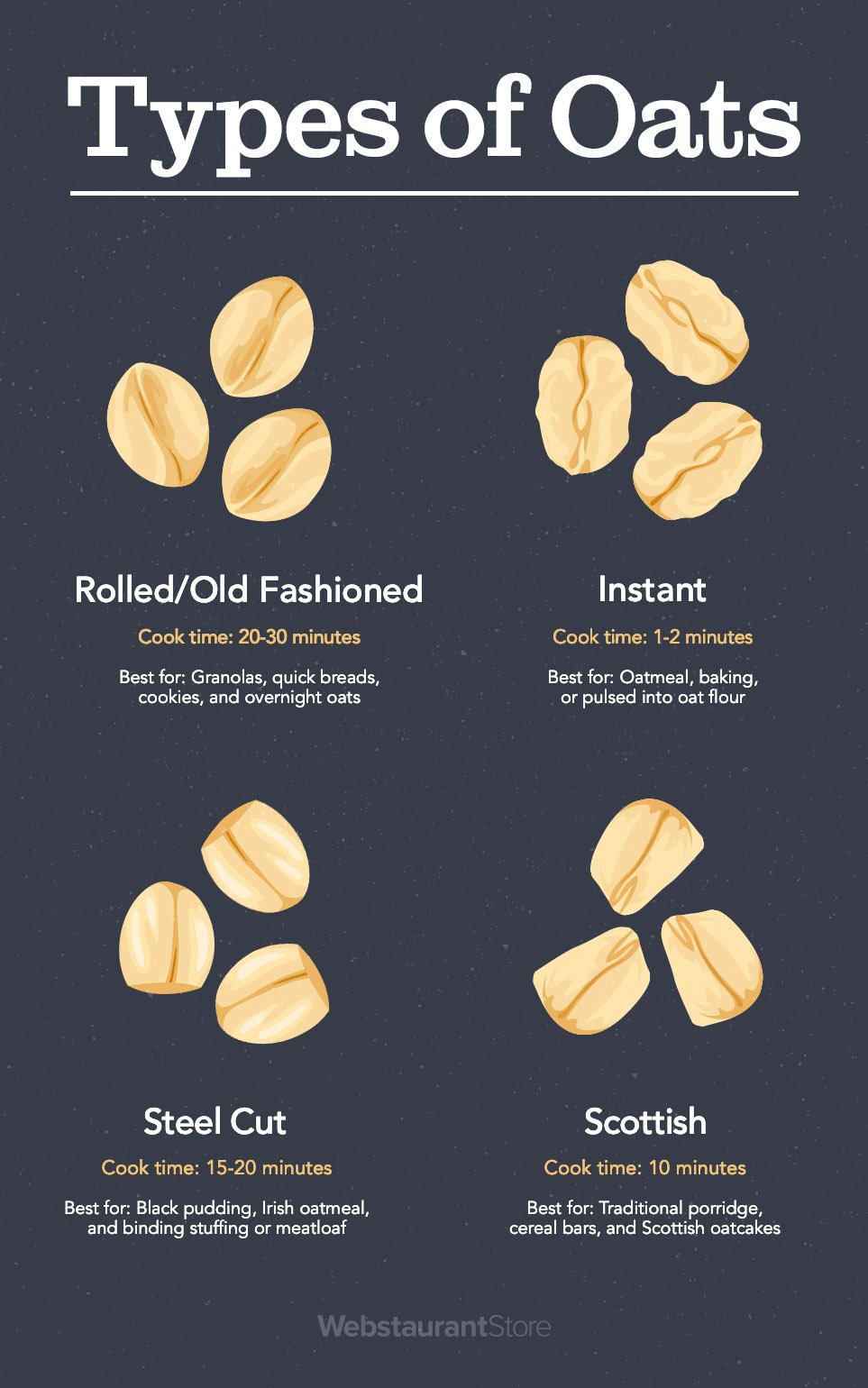
While all of the different types of oats available derive from the same starting point of raw oats, their individual processing makes them into entirely different shapes, tastes, and uses. Keep in mind their differences next time you’re at the grocery store or adding oatmeal to your continental breakfast menu!



